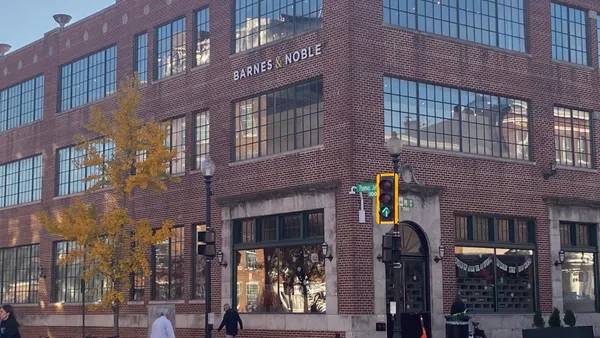Dive Brief:
- Despite a slowdown in e-commerce sales the past two years, global online retail sales are expected to grow from $4.4 trillion in 2023 to $6.8 trillion by 2028 at an 8.9% compound annual growth rate, per a new Forrester report.
- Online sales in the U.S. are expected to grow from $1 trillion in 2023 to $1.6 trillion by 2028 and will account for 28% of total domestic retail sales, according to the report. Only China, with $1.8 trillion in online sales last year, was bigger, with the two countries making up about two-thirds of global e-commerce volume.
- While online sales are poised to grow over the next few years, offline retail at physical stores will remain robust. By 2028, some 76% of total global sales will still come from offline retail, per the report, amounting to $21.9 trillion.
Dive Insight:
Forrester found that online purchasing still resonates with a large swath of consumers in the U.S. although it has moderated in the years since the COVID-19 pandemic.
“Although widespread store closures and social distancing during the pandemic turbocharged e-commerce growth, recent years saw a growth reversal as consumers flocked back to physical stores,” Jitender Miglani, principal forecast analyst at Forrester, wrote in a blog post on the report. “Looking ahead at 2024 and beyond, we expect that online sales will regain momentum from shopping offers and generative AI initiatives.”
The report, which included information from 40 countries that represent 88% of the world’s gross domestic product, found that online sales growth was primarily coming from the growth of marketplaces, social commerce, online grocery buying, BOPIS, quick commerce, livestream selling and DTC selling.
In the shorter term, a recent online sales report from Adobe revealed that while U.S. consumers have been trading down in terms of online spend, sales in the channel are still up 7% from a year ago for the period Jan. 1 through April 30.
While online sales continue to grow, physical stores remain integral to much of the shopping experience. A separate report in 2023 from the International Council of Shopping Centers found that when a new store opens, it increases online shopping in the area by 6.9%, an effect that grows to 13.9% for DTC brands. Conversely, closing a brick-and-mortar location results in decreased online sales for a brand by 11.5%.
As these trends play out, a growing number of DTC brands are accelerating the pace of opening pop-up shops and permanent brick-and-mortar locations, as well as forming wholesale partnerships in order to broaden their base of consumers and meet customers where they shop. It’s part of a movement toward a hybrid operating model between online and physical retail as more brands recognize the limits of selling exclusively through e-commerce. In fact, a recent NuOrder report found wholesale was the most profitable investment channel for brands.
“The hybrid business model that incorporates both online and brick-and-mortar elements is crucial for modern retail business growth,” Miglani said in an email. “It leverages the strengths of both physical and digital platforms to offer a seamless customer experience. It helps meet consumer expectations for flexibility and convenience by providing multiple touchpoints for engagement. Integrating online and offline channels also helps create a cohesive omnichannel experience.”













